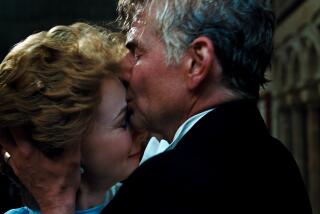Conductor in Sync With Movie
Composer Richard Einhorn read more than 3,000 pages of ancient female mystical writings, in addition to verbatim transcripts of Joan of Arc’s trial, before settling on which texts to use for his “Voices of Light” oratorio honoring the French martyr.
He spent weeks merely locating the original Latin and Old French versions. Three years ago he traveled to France to visit important Joan of Arc historical sites; he recorded a church bell in her birthplace for use in performances.
Conductor Lucinda Carver also has been nothing short of obsessive about her role in performances of the work. But her obsession has centered on synchronizing Einhorn’s music with the film that inspired it, Carl Theodor Dreyer’s 1928 masterpiece, “The Passion of Joan of Arc.”
“The composer definitely did not want to lay down a click track, traditionally used to synchronize music with film, like a metronome,” said Carver, who lives in Los Angeles and leads the L.A. Mozart Orchestra. “He wanted it to sound like the music had a life of its own.” Carver also eschewed the idea of using a metronome: “It would sound metronomic, for lack of a better word.
“I decided to study the film over and over, to know every frame. Richard gave me a video with synthesized soundtrack; I put copious marks in the score. I went over and over it until I could watch the silent version and hear in my head exactly how the music fit. I also watched the film while playing the score on the piano. I purchased a miniature video player so I could take Joan with me everywhere when I travel--I still take it with me when I perform the piece.”
Then came the switcheroo: A new print to be shown this weekend has intertitles that are slightly different lengths than the one Carver studied.
“All my copious notes were useless,” Carver recalled. “At 24 frames per second, the slightest deviation changes the way the music fits.
“Over time, I’ve learned to have ebb and flow and still be in sync at crucial places. . . . I’ve gotten a greater sense of liberty. I never do the piece exactly the same twice.”
Einhorn has also learned something over time: “Conductors,” he said, “take synchronization a lot more seriously than I ever did.”
More to Read
The biggest entertainment stories
Get our big stories about Hollywood, film, television, music, arts, culture and more right in your inbox as soon as they publish.
You may occasionally receive promotional content from the Los Angeles Times.










